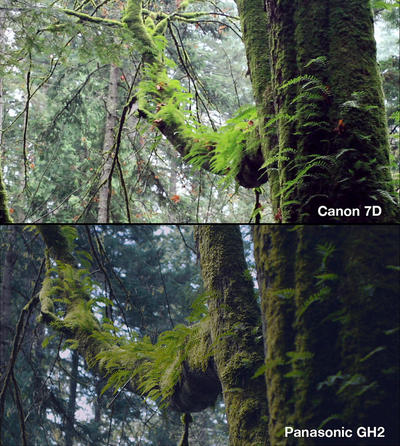It's mainly three reasons:
1. Panasonic dropped the ball marketing the GH2, while Canon killed it at marketing their DSLRs.
2. People are afraid of the smaller sensor, because they think bokeh and DOF have anything to do with quality footage. Even then, the m4/3 is capable of shallow DOF that is indistinguishable from APS-C.
3. People are under the impression that there isn't quality/variety of glass for m4/3 sensor. Again, this is Canon's brilliant marketing at work. They've convinced people that L lenses are not only good for video, but that they are superior to older and cheaper alternatives. Truth is, there is a much larger variety of lenses for the m4/3 system, and a larger percentage of those lenses are more cinematic (in terms of optics and build) than the DSLR lenses. Sure, there aren't dozens of UWA lenses available, but the 3 that are available absolutely destroy any Sigma/Rokinon/Canon/Nikon UWA. Same with with the Voigtlander primes, or the Canon FD lenses, which produce some of the best images I've ever seen from a camera, DSLR or otherwise.
The m4/3 crop factor is roughly 1.9x, versus the 1.6 of an APS-C. That's such a miniscule difference that can be solved by taking one step backwards. I've used a Tokina 11-16 on both a GH2 and a 7D and they both felt the same. I can still stand on the lip of a jump three feet away from the skier and get everything in frame.
In case it wasn't mentioned, Canon DSLRs only have ~700 lines of native resolution. Add moiré and false color effects and you'll have a pretty difficult time seeing details. Not to mention the 5DmkIII's backass way of treating the symptom of moiré rather than the disease and adding an anti-aliasing (softening) filter. The GH2 puts out ~900 lines of native sensor resolution (like the Sony EX1/EX3), and the difference is huge. Here's a little test I did comparing my 7D to my GH2. Same lenses, settings, etc.

